
Claus Georg Stabe Day of the Voyage
Leipzig 13 Jan – 16 Mar 2024

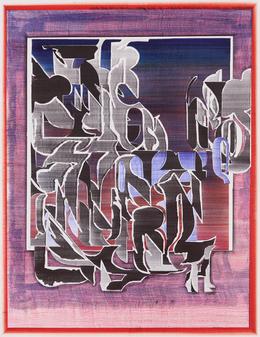

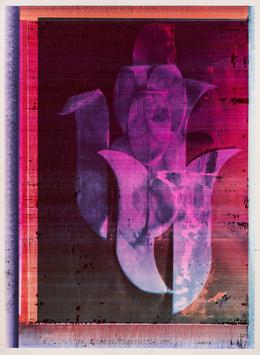

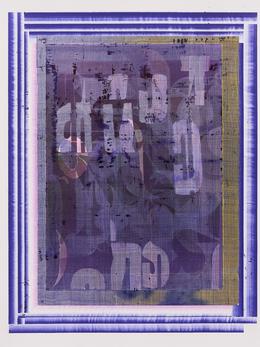
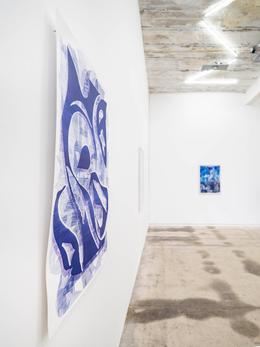
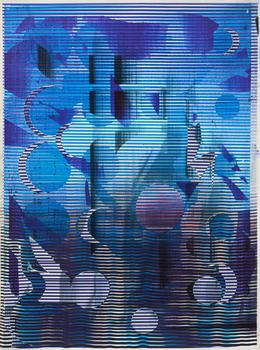
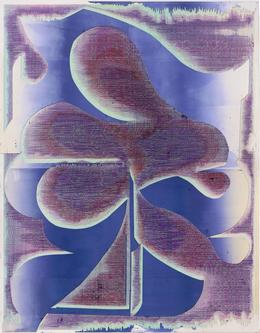



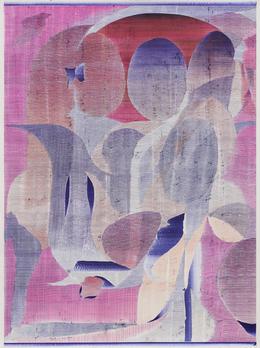

Exhibition opening for the SpinnereiGalleries grand tour on 13 January 2024 from 11 a.m. to 7 p.m.
On this day, all galleries on the site of the old cotton spinning mill in Leipzig will open new exhibitions.
DAY OF THE VOYAGE
Claus Georg Stabe’s pictures lead us on a journey through the depths of the oceans to ancient, almost forgotten places. This kaleidoscopic expedition takes us from the smallest to the largest, from micro to macrocosm, from the detail to the all-encompassing overview. At the end we are confronted by the finality of the drawing. We, the viewers, are always assigned the role of observer. However, in the case of the group of works shown at REITER, it remains unclear whether we are looking from a great distance or from close range. From the intoxicating heat of a summer day or the bitter cold of a winter night, we grasp the pictures in different ways. Nightmares are juxtaposed to pipe dreams, sunrises mutate into twilight, and luscious landscapes become barren wastelands.
Through the pictures we embark on a journey, experience a year, receive an insight into a life. From season to season, from pole to pole, from memory to memory, the drawer wanders through his innermost being, inviting us to share in it. Two dimensional and nevertheless enormously multi-layered, the sheets provide a glimpse of luminous dream spaces which, as if through a thin curtain, allow insights into a parallel world of forms. As observers we become a part of the narrative, which can only really exist when it is shared with others. The pictures reveal the personal and the acquired, impressions of third persons blend with first hand experiences, ultimately generating a structure between absolute dissipation and controlled creation.
This constitutes the profoundest aspect of the artist’s work: the visible and invisible connections. The rhythms of the lines, the pulsing contraction and expansion, can be understood as the essence of a world in which the days continually repeat themselves, without becoming monotonous. Quite the opposite, perhaps repetition provides Stabe with a foothold and security, as it is a reliable component that promises consistency. Full of hope, the stroke that he applies to the paper, like a ritual, day after day, repeats itself. In the ballpoint pen drawings countless individual lines are superimposed on each other to create surfaces and webs, objects and sceneries, warnings and demands. The line graphics are produced using ballpoint pen and paper. Through alterations in the pressure applied to the pen denser and lighter lines are generated, and alternating, translucent inks create a sublime coloration. The horizontal traces form concrete, alienated and abstract motifs, shrouding them in a mysterious aura.
The aesthetics of the drawings and collages are thus reminiscent of contemporary tapestries. Like witnesses to important events and singular moments whose narratives the artist weaves, and thus shares with us. In late medieval Europe the tapestry was the most magnificent and expensive medium for figurative two dimensional depictions, and despite the rapid growth in the importance of painting maintained this position in the eyes of many Renaissance patrons until at least the end of the 16th century, if not beyond.[1] Seen historically, the iconography of the majority of the narrative tapestries originates from written sources, whereby the bible and Ovid’s Metamorphoses are two popular examples. In the case of Stabe he borrows from a poem by Angus MacLise (1938-79). In “The New Universal Solar Calendar“ the American percussionist, composer, poet, occultist and calligrapher renamed the days of the year. Stabe draws the titles of the individual works from this poem, adding a further component to the mystical illuminations with their cryptic symbolism.
For MacLise the 31st of March becomes The Topaz Glove. At first glance Stabe’s work of the same name The Topaz Glove IX, 2023 appears to be an abstract image. On closer inspection it is possible to draw connections to petals, perhaps a lily. However, if one keeps the title in mind, completely new interpretation possibilities open up. Now one can see the fingers of a glove, more than the usual five, perhaps it is a pair of gloves. Due to the flickering of the colors it is possible we are exposed to an optical illusion that causes us to see the object double. Topaz is a colorless, lucent mineral, also found in many light colors, which is employed as a precious stone—a completely inappropriate material for providing protection or warmth. Through the connotation of glove and precious stone, the object awakens associations with arm reliquaries. These are containers made from wood or metal, primarily gilded silver, used for the storing and ceremonial exposition of the remains of saints. In this object, in the form of a forearm with a hand, there is a cavity for storing the reliquary. In the early period the cavity was generally completely covered, later it was sealed with a grid or a transparent material—such as semi-precious stones or precious stones—which allowed a view of the reliquary and was designed to be opened.[2]
We will perhaps never know the actual meaning of the glove, the mineral, and the date of the last day of March for the artist. As initially mentioned, the work of Claus Georg Stabe has a specific function and is clearly defined, nevertheless, it invites the observer to explore their own associations, to establish their own conclusions, connections and memories, and allow new ways of thinking.
[1] Cf. Campbell, Thomas P., Henry VIII and the Art of Majesty: Tapestries at the Tudor Court, Yale 2007.
[2] O. von Falke, R. Schmidt, G. Swarzenski, Der Welfenschatz, Frankfurt a. M. 1930.
– Nicola Petek, 2024
On this day, all galleries on the site of the old cotton spinning mill in Leipzig will open new exhibitions.
DAY OF THE VOYAGE
Claus Georg Stabe’s pictures lead us on a journey through the depths of the oceans to ancient, almost forgotten places. This kaleidoscopic expedition takes us from the smallest to the largest, from micro to macrocosm, from the detail to the all-encompassing overview. At the end we are confronted by the finality of the drawing. We, the viewers, are always assigned the role of observer. However, in the case of the group of works shown at REITER, it remains unclear whether we are looking from a great distance or from close range. From the intoxicating heat of a summer day or the bitter cold of a winter night, we grasp the pictures in different ways. Nightmares are juxtaposed to pipe dreams, sunrises mutate into twilight, and luscious landscapes become barren wastelands.
Through the pictures we embark on a journey, experience a year, receive an insight into a life. From season to season, from pole to pole, from memory to memory, the drawer wanders through his innermost being, inviting us to share in it. Two dimensional and nevertheless enormously multi-layered, the sheets provide a glimpse of luminous dream spaces which, as if through a thin curtain, allow insights into a parallel world of forms. As observers we become a part of the narrative, which can only really exist when it is shared with others. The pictures reveal the personal and the acquired, impressions of third persons blend with first hand experiences, ultimately generating a structure between absolute dissipation and controlled creation.
This constitutes the profoundest aspect of the artist’s work: the visible and invisible connections. The rhythms of the lines, the pulsing contraction and expansion, can be understood as the essence of a world in which the days continually repeat themselves, without becoming monotonous. Quite the opposite, perhaps repetition provides Stabe with a foothold and security, as it is a reliable component that promises consistency. Full of hope, the stroke that he applies to the paper, like a ritual, day after day, repeats itself. In the ballpoint pen drawings countless individual lines are superimposed on each other to create surfaces and webs, objects and sceneries, warnings and demands. The line graphics are produced using ballpoint pen and paper. Through alterations in the pressure applied to the pen denser and lighter lines are generated, and alternating, translucent inks create a sublime coloration. The horizontal traces form concrete, alienated and abstract motifs, shrouding them in a mysterious aura.
The aesthetics of the drawings and collages are thus reminiscent of contemporary tapestries. Like witnesses to important events and singular moments whose narratives the artist weaves, and thus shares with us. In late medieval Europe the tapestry was the most magnificent and expensive medium for figurative two dimensional depictions, and despite the rapid growth in the importance of painting maintained this position in the eyes of many Renaissance patrons until at least the end of the 16th century, if not beyond.[1] Seen historically, the iconography of the majority of the narrative tapestries originates from written sources, whereby the bible and Ovid’s Metamorphoses are two popular examples. In the case of Stabe he borrows from a poem by Angus MacLise (1938-79). In “The New Universal Solar Calendar“ the American percussionist, composer, poet, occultist and calligrapher renamed the days of the year. Stabe draws the titles of the individual works from this poem, adding a further component to the mystical illuminations with their cryptic symbolism.
For MacLise the 31st of March becomes The Topaz Glove. At first glance Stabe’s work of the same name The Topaz Glove IX, 2023 appears to be an abstract image. On closer inspection it is possible to draw connections to petals, perhaps a lily. However, if one keeps the title in mind, completely new interpretation possibilities open up. Now one can see the fingers of a glove, more than the usual five, perhaps it is a pair of gloves. Due to the flickering of the colors it is possible we are exposed to an optical illusion that causes us to see the object double. Topaz is a colorless, lucent mineral, also found in many light colors, which is employed as a precious stone—a completely inappropriate material for providing protection or warmth. Through the connotation of glove and precious stone, the object awakens associations with arm reliquaries. These are containers made from wood or metal, primarily gilded silver, used for the storing and ceremonial exposition of the remains of saints. In this object, in the form of a forearm with a hand, there is a cavity for storing the reliquary. In the early period the cavity was generally completely covered, later it was sealed with a grid or a transparent material—such as semi-precious stones or precious stones—which allowed a view of the reliquary and was designed to be opened.[2]
We will perhaps never know the actual meaning of the glove, the mineral, and the date of the last day of March for the artist. As initially mentioned, the work of Claus Georg Stabe has a specific function and is clearly defined, nevertheless, it invites the observer to explore their own associations, to establish their own conclusions, connections and memories, and allow new ways of thinking.
[1] Cf. Campbell, Thomas P., Henry VIII and the Art of Majesty: Tapestries at the Tudor Court, Yale 2007.
[2] O. von Falke, R. Schmidt, G. Swarzenski, Der Welfenschatz, Frankfurt a. M. 1930.
– Nicola Petek, 2024
Artists